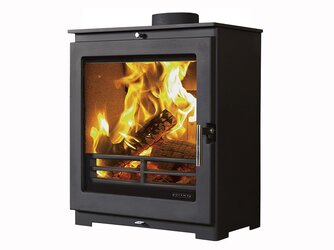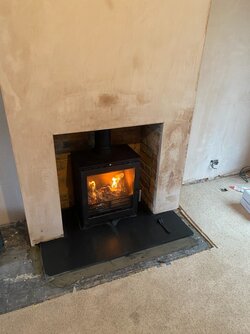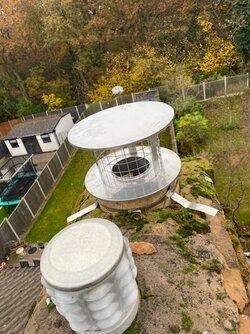Hi all,
We had a Portway (previously Flavel) Arundel XL multifuel burner installed a few weeks ago, it's a nice looking stove but it's causing us some headaches, installer not being particularly helpful, blaming user error, neither is supplier, and manufacturer seemingly impossible to get hold of.
It's Defra approved etc. with a 5 inch collar and we've got an uninsulated 5" flue liner in a brick chimney on a 50s semi, just a standard bird blocking cowl on top.
Constant issue of smoke billowing into the room when we open the door, we've tested the moisture in our wood supply to make sure that's not the issue, we've also tried removing the restrictor plate that sits above the baffle/throat plate in our model which improved it a little. We also get a lot of wind noise coming down the chimney but we do live in a bit of a basin surrounded by hills and we back onto a small woodland.
Manufacturer guidance suggests we should only be opening door when burned down to embers, but we seem to have been spoiled in the sense both parents have stoves they can leave the door wide open on with no smoke or smells leaking into the room.
I notice there's not much of a gap for the smoke to get past the baffle plate and have also noticed on another forum someone has removed their restrictor plate and cut their baffle plate down to solve the issue but I'm worried it may risk damage to the stove.
We are tired of the room smelling like a bonfire and having to be extra cautious with everything to avoid ash and smoke swirling into the room. What should be my next port of call to solve?
Any guidance very much appreciated.
Cheers
We had a Portway (previously Flavel) Arundel XL multifuel burner installed a few weeks ago, it's a nice looking stove but it's causing us some headaches, installer not being particularly helpful, blaming user error, neither is supplier, and manufacturer seemingly impossible to get hold of.
It's Defra approved etc. with a 5 inch collar and we've got an uninsulated 5" flue liner in a brick chimney on a 50s semi, just a standard bird blocking cowl on top.
Constant issue of smoke billowing into the room when we open the door, we've tested the moisture in our wood supply to make sure that's not the issue, we've also tried removing the restrictor plate that sits above the baffle/throat plate in our model which improved it a little. We also get a lot of wind noise coming down the chimney but we do live in a bit of a basin surrounded by hills and we back onto a small woodland.
Manufacturer guidance suggests we should only be opening door when burned down to embers, but we seem to have been spoiled in the sense both parents have stoves they can leave the door wide open on with no smoke or smells leaking into the room.
I notice there's not much of a gap for the smoke to get past the baffle plate and have also noticed on another forum someone has removed their restrictor plate and cut their baffle plate down to solve the issue but I'm worried it may risk damage to the stove.
We are tired of the room smelling like a bonfire and having to be extra cautious with everything to avoid ash and smoke swirling into the room. What should be my next port of call to solve?
Any guidance very much appreciated.
Cheers





